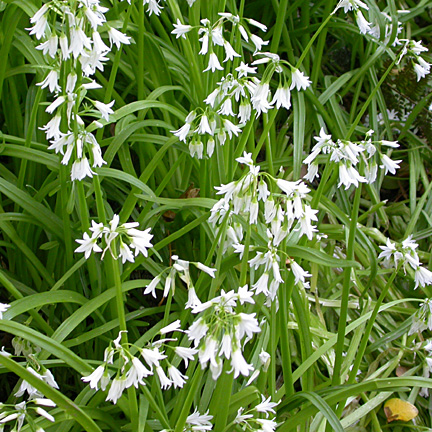You are using an out of date browser. It may not display this or other websites correctly.
You should upgrade or use an alternative browser.
You should upgrade or use an alternative browser.
little white flowers.
- Thread starter noseall
- Start date
the flowers in question are not what you would call tall in any sense. they seem to grow across rather than up, and are definitely not wild garlic.
Do they move around at all? Baby Triffids?
hermes said:Do they move around at all? Baby Triffids?
I hope they are baby triffids and not their parents
hermes said:Do they move around at all? Baby Triffids?
well if your not going to take this seriously then i will just have to look elsewhere.
does any one know where i can find a 'tiny white flower by the roadside that flowers in early spring' forum?
JohnD said:show us a pic.
surely you have 'em in hampshire don't you John?
they are prevalent at the road edge where nothing else appears to grow.
this question can only apply to those folks who go out during daylight hours.
and beyond urban areas where grass verges exist.
that's actually past the local boozer.
any of these it?
http://www.open.ac.uk/science/biosci/research/ecology/silvertown/J_Silver/Wf_plnts.htm
a pic would help.....do you realize how many "little white flowers that grow by the roadside" there are?
http://www.open.ac.uk/science/biosci/research/ecology/silvertown/J_Silver/Wf_plnts.htm
a pic would help.....do you realize how many "little white flowers that grow by the roadside" there are?
I had a chat with our neighbour tonight as he is an avid gardner and I thought it possible he may know. He is unsure, and thinks that there is more than one species, however after a root through some books, over a beer of course, he has decided that the most common of the two likely candidates, and species known to exist by the roadside are Dwarf species of Daisy and Cowslip. He also said that Ragwort has invaded inland from the coastal regions and it too produces small white flowers in the spring and they are ground hugging species too.
Personally I don't have a clue, a flower is a flower is a flower. I know how to identify the important ones to keep the Wife happy occasionally, but that is where my knowledge ends.
Personally I don't have a clue, a flower is a flower is a flower. I know how to identify the important ones to keep the Wife happy occasionally, but that is where my knowledge ends.
Ragwort is yellow,
hows about this ''stitchwort''?

try this site
http://www.botanicalkeys.co.uk/flora/
hows about this ''stitchwort''?

try this site
http://www.botanicalkeys.co.uk/flora/
- Joined
- 24 Sep 2005
- Messages
- 6,345
- Reaction score
- 268
- Country

Questions have been asked....
Wild Strawberry (fragaria vesca L) Barren or otherwise?

-
Hansard said:Road Salting
Mr. Corbyn: To ask the Secretary of State for Transport what assessment he has (a) commissioned and (b) evaluated on the effects of road salting on (i) roadside flora, (ii) roadside fauna, (iii) vehicles and (iv) bridges. [11644]
Mr. Watts: I have asked the chief executive of the Highways Agency to write to the hon. Member.
Letter from Lawrie Haynes to Mr. Jeremy Corbyn, dated 25 January 1996:
The Secretary of State for Transport has asked me to reply to your question asking what assessment he has commissioned and evaluated on the effects of road salting on roadside flora, fauna, vehicles and bridges.
A comprehensive study of the effects of road salting on roadside flora was carried out by the Transport Research Laboratory in 1982. The subsequent report was "An Assessment of The Conditions For Shrubs Alongside Motorways" by Colwill, Thompson and Rutter, Laboratory Report 1061.
A study was also commissioned in April 1989 into the performance of concrete in bridges. Known as the "Maunsell Report", its findings have been included within the 15 year bridge rehabilitation programme.
There has not been any separate assessments on evaluating the effects of road salting on roadside fauna or on vehicles.
25 Jan 1996 : Column: 354
...TRRL
Laboratory Report 1061 has suggested that, on verges 5m from the hard shoulder, the concentration of salt in the soil is a negligible hazard to any plants. Exceptions to this may be more sensitive and specialised species which can only be grown within a small range of chemical tolerances.
Small droplets of spray may be blown further afield, and in harsh winters, severe browning of Scots pine and spruce has been noted up to 15m from the carriageway, Saline conditions can also build up, in the longer term, in the 2m verge leading to the development of plant communities which are either salt tolerant or characteristic of salt marshes.
Spray damage is usually unsightly rather than life- threatening to plants, although it may have adverse effects of sensitive habits containing communities or populations of plants with specialised requirements. In general, spray damage is more likely to affect evergreen trees and shrubs which will be in leaf when de-icing takes place...
Wild Strawberry (fragaria vesca L) Barren or otherwise?

-
Richardp said:Ragwort is yellow,
hows about this ''stitchwort''?

try this site
http://www.botanicalkeys.co.uk/flora/
He may have said Stitchwort..I know it ended in wort, and I have heard of Ragwort..so it could be my mistake Richard.
i'm not sure yet, but i think as the flowers mature, they may have a hint of purple?

